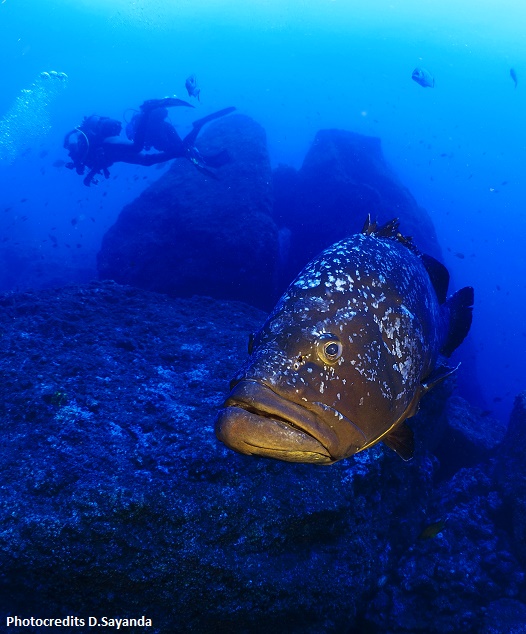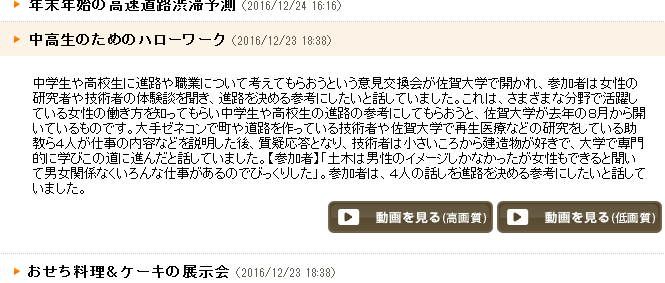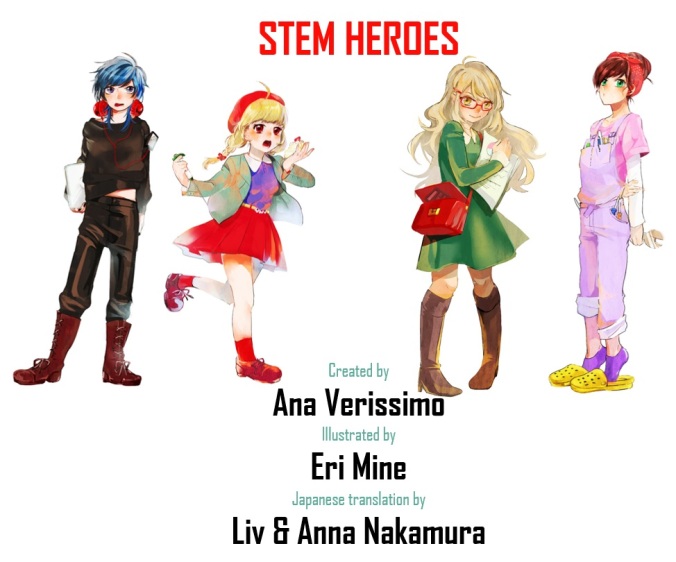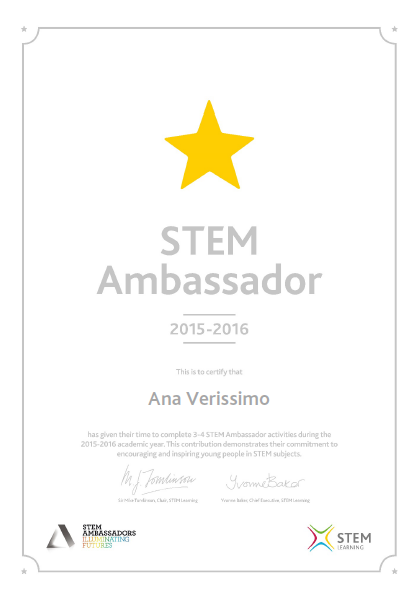This post is the perfect example that the information is out there, we just have to search, find, sieve through, process and learn. When I set off to write it, I was going to start by saying that there are no comics about science, only science fiction (which is not a bad thing, but I’ll get to that in a moment). Well, it turns out that it’s not exactly true. And the post ended up being much longer than initially planned. There is certainly room for a lot more, though. More authors, more subjects, more characters, more stories, more fun.
Melanie E. Hughes and Gary Pinkston wrote “Graphic Novels Ignite Imagination in the Sciences” for “How to STEM”, edited by Vera Gubnitskaya and Carol Smallwood (2013) where they show that science and arts can go together from a young age. Children can learn and cement STEM knowledge (as well as history and other subjects) through the creation (or reading) of graphic novels or comics, as well as improve art, communication, representation and writing skills. This is also an opportunity to have minorities and each child’s own circumstances represented, which can be inspiring, empowering and educational.
Therefore, comics, among others, can be a new tool to encourage and make STEM learning easier and more engaging. Science can be intimidating at first, especially after a bad result or not being able to immediately grasp a concept, so comics and games are a great way of breaking the ice and making learning fun. In the era of Instagram and similar apps, everything happens very fast and a lot of information is now acquired through imagery rather than lengthy text. The way we learn is changing, and visual learning is becoming an important and powerful tool, so curricula and learning materials should evolve accordingly. Jim McCLain said he knew his comics were working when he saw his students raising and lowering their hands in class (one character of his books, Absolutia, who represents absolute values, does that to illustrate adding positive and negative integers). Jim is a maths teacher who created Solution Squad for his students. The first book is funny (lots of maths puns), clever (full of details; for example, the squad’s HQ boat is called Soh-Cah-Toa, from Sine, Cosine and Tangent) and well-conceived (readers of the digital version can learn in their own time, deciding when the next image will come up). He has also produced lesson plans that other educators can use and a video guide to the book.
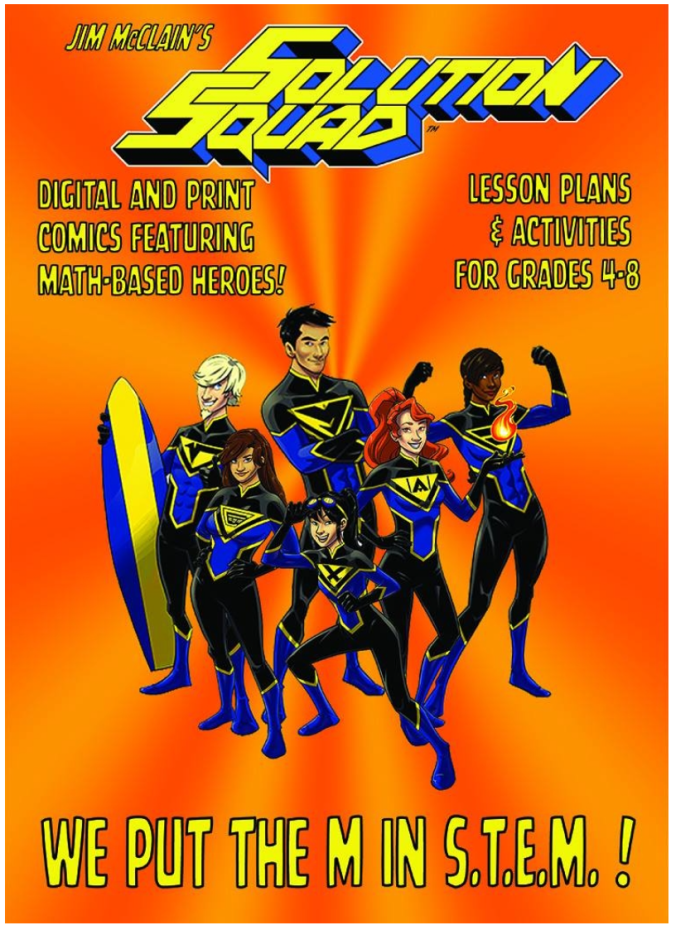
Engaging students in STEM, particularly when it comes to more complex notions can be challenging. Therefore, new, more appealing methods need to be created and implemented. Sometimes it is not that students don’t have interest, but they are not encouraged after bad results, which leads them to quit, lose interest and think they will never be any good at the subject. Also, they say they find classes boring. I’ve heard this over and over again (even from very shy Japanese girls who are not supposed to “complain” about anything). We need to connect with them in a way that works. Life is now different from when I was in school, a lot faster in some ways, more visual and interactive, so learning materials need to match that, as this is now how children learn and what their world is like. Trying to impose old methods on them (only) will not work. And the kids are not the ones to blame.
Apart from comics, science games are also a fun way of learning STEM. Science friction, for example, is one of several STEM behind Hollywood activities from TI-Nspire™ (Texas Instruments), developed in collaboration with Adam Weiner, a high school physics educator. Programming, as well as design/art to make the products more attractive and usable were also necessary. Nowadays, everything is about collaboration and multidisciplinarity. The game transforms students in a villain’s minions, working out the best way to slow down a superhero. They get to experiment with different substances (using an app, with materials properties and actual formulae), so they learn and apply concepts of Newton’s laws and friction forces.
There is a deficit of women in STEM and correcting that needs to start from a young age, when their enthusiasm, confidence and natural curiosity are still unspoilt, but also so that they acquire the knowledge and skills that will allow them to progress and be on the right track to do that at high school or university level later on (this is of course valid for boys and girls, but girls really do need to be reassured and reminded that they can be just as good). Comics are frequently associated with boys and nerds and not very often seen as “literature” that should belong in a library. Boys and girls are different, no doubt about that. However, that doesn’t mean they can’t be equally good at STEM jobs. According to Bucher and Manning (2004), girls prefer Japanese manga over comics, as the characters are often teenagers they can relate to and the stories focus more on relationships. So, I may be taking a gamble here with my manga series! STEM heroes (more of that in the next post) has teenage girls as main characters, but the focus is on science education, as well as empowering girls and showing them that they can be just as good at STEM as anyone else and still be awesome. I’ll take the risk. There are very few manga books on science and those that exist, for example The Manga Guide (to relativity, statistics, molecular biology, chemistry, etc.), don’t have an ongoing plot. Each book is written by an expert in the subject and therefore the characters and stories are self-contained and have no connection with the other books in the series. The series is published by Ohmsha in Japan and by No Starch Press, Inc. in the US. STEM heroes is a series that follows the adventures of the same four characters and on each book they will meet new friends (some of them boys, some from different backgrounds and ethnicities) that add extra expertise to help solve problems.
A lot of super heroes have gained their incredible abilities through science-related events. This is great to stimulate children’s (of all ages) imagination. However, most of these adventures would be impossible under our natural laws. TEDed have a series of hilarious and clever short videos that explores why some super powers (super strength, super speed, body mass, immortality, invisibility and flight) are not feasible from a science point of view. In contrast, this article tells us about recent scientific discoveries/advances that remind us of some strange powers and features of super heroes.
Slowly, comics are making their way into schools. Norn Iron’s Ordinary Heroes is a comic book series for Key Stage 2 and 3 pupils about Northern Ireland’s own real life STEM heroes (Sir James Martin, Dr Chen Situ, Jocelyn Bell, John Stewart Bell and Frank Pantridge).
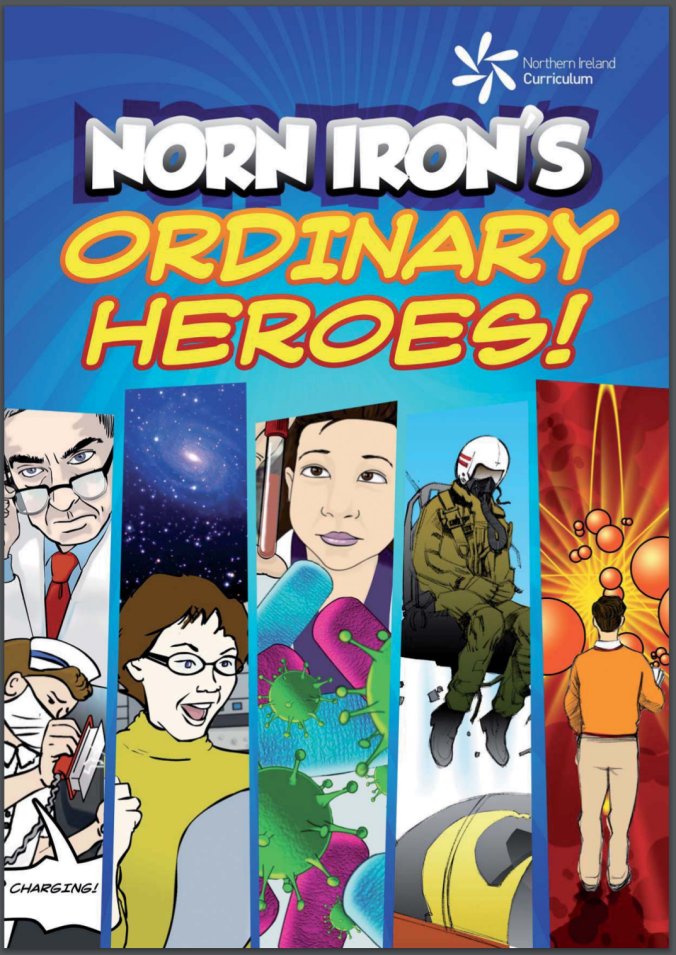
In addition to new books, more traditional and established comics can also be approached by a different angle to educate whilst inciting creativity, logic and questioning. Comic Tanium was a travelling exhibit that invited participants to explore and discuss the real-life base for (famous) super heroes’ powers as well as to discover STEM through real life heroes (using materials science). Geek dad also has books and activities to keep kids busy.
Robomatter, based in Pittsburgh, produce educational software, curriculum, and tools for robotics and computer science education. They have also created The Resolvers, a group of STEM super heroes that help children solve problems and each has distinct super powers, such as super speed or super strength.
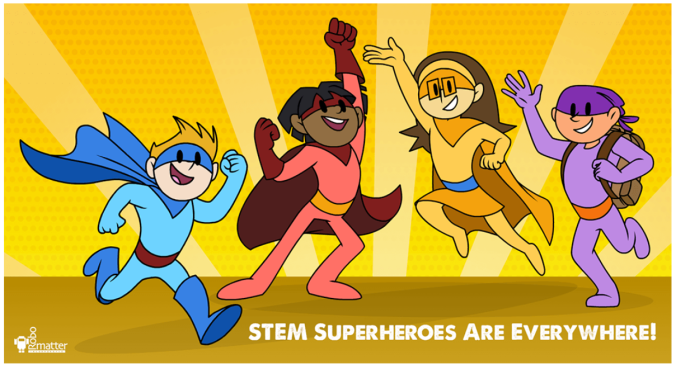
Last year the North Carolina Science Festival has once more held the annual “Science & Superheroes” contest, where students in the Charlotte area explored various scientific principles to create their own super heroes with STEM-related powers to solve real-world problems.
TAME (Texas Alliance for Minorities in Engineering) have created Science Squad, a comics series where each book stars a team of five ethnically diverse TAME students who use their abilities in math and science to save the day. It is even appropriate for a wide range of ages, where older children will enjoy reading the story whilst younger children can colour in the illustrations. The first installment is on energy and the second one is on robotics. For some reason, the image reminded me of Captain Planet (ah, the memories!).
In 2016 Marvel have unveiled their STEAM variant covers for a month, such as The Iron Man (engineering), Moon Girl (science), Spider Man (technology), Champions (arts) and Gwenpool (maths) to increase awareness of STEM and the arts (STEAM). For example, Lunella Lafayette, or Moon Girl, is a very smart little girl who likes to invent gadgets and doesn’t fit in at school. One of her devices gets accidentally activated and a time-space postal is opened, bringing some bad guys and a dinosaur. Lots of action and even a visit from Hulk. It’s fun and shows diversity. My STEM heroes are based on real applications of STEM, so anyone with STEM skills and knowledge can actually be a real-life hero. Also, the girls are proud of being smart, and don’t care what others think about that.

Even Comic Con had a STEM panel, which proved to be a huge success. Spectra comics is a series about physics, written by Rebecca Thompson (PhD in Physics, now the head of APS Public Outreach). The stories follow the adventures of a middle school superhero with all of the powers of a laser beam. Readers can learn about magnetism and particle physics and she will fight enemies such as General Relativity. Books 1-8 can be downloaded for free here and the next installment will be released in 2017. Jim McCLain, creator of Solution Squad has also attended. Another panelist was Paige Braddock, author of Stinky Cecil, a toad who teaches readers about biology and ecosystems. Another good read on this theme is my friend Sonia Costa’s book A Longa Viagem de Angui e Luna (Angui and Luna’s Long Voyage), that follows the story of two eels all the way from the Sargasso Sea to Minho river in Portugal. It’s about all the changes that occur during the life cycle of the European eel and many concepts will be learnt through their adventures and encounters with other characters, such as biodiversity, environment, species, metamorphosis and estuary. It is also a story of friendship, team work and hope.

Another example from Portugal is A Stem cell adventure by Joao Ramalho-Santos and Andre Caetano, sponsored by Ciencia Viva, which was a project from the Centre for Neuroscience and Cell Biology of the University of Coimbra, Portugal, aiming to provide basic knowledge on stem cells and their possible uses to the general population. Get it for free here (scroll down for the English version).
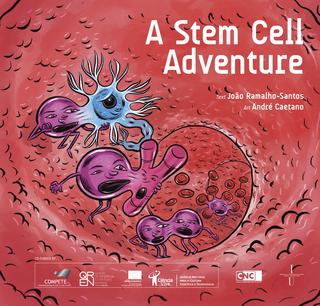
When it comes to non-fiction, a few graphic novels have also been created, such as Ravé Mehta’s “The Inventor: The Story of Tesla”, that is based on the true story, inventions and ideas of Nikola Tesla. He (the author, obviously) is also the founder of Helios Entertainment, which develops content to facilitate STEM learning through graphic novels, music, films, games, and shows.
Secret Coders is a graphic novel series by Gene Yang where two school kids solve clues and puzzles using code.
Along a Field Line by Big Time Attic and Jeffrey J Love (US Geological Survey Journey) is for those interested in learning about Earth’s geomagnetic field. You can get it for free here.
In P.B. Soldier by Naseed Gifted, engineer turned teacher, the main character is a skilled African-American computer hacker (Sci-fi). He ran a first crowdfunding campaign for the second episode that was not successful, but that didn’t deter him and the second campaign, with a more modest goal (and probably a bigger fanbase) was successfully funded. Another case of crowdfunding success is Miles Greb’s 25 (to be) issues sci-fi series After the Gold Rush. Scout, a girl born in space returns to Earth to find that Science had been abandoned. That makes her the last scientist left and she embarks on journey to re-educate and bring science back to a world dominated by religion and superstition. Crowdfunding platforms are a great way of not only obtaining funding for a project, but also build a community around it and reach out to people anywhere in the world. At the moment, at Indiegogo, Fernando Valez aims to fight for gay rights in an artistic way with his campaign Gay-Heroes Comics.
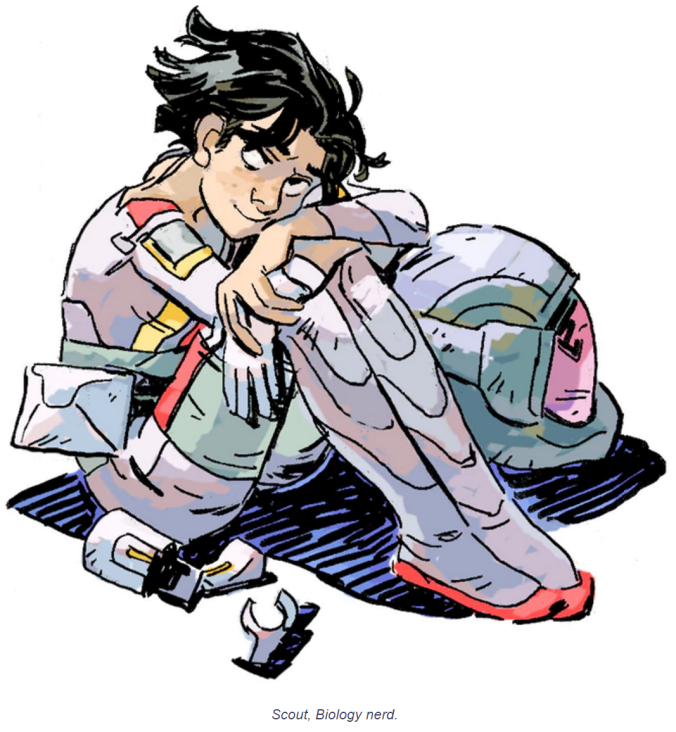
The above are all good examples of how collaborating with the arts can produce more visually appealing and engaging materials, such as books, videos, apps, activities and games. Or cakes! At work, we have science cakes and your PhD in a cake competitions for charity and it’s always a lot of fun. People do come up with incredible ideas that tell a story and are visually very attractive. There was even a dance your PhD competition on YouTube.
Science and art can even be combined to create innovative businesses, such as PlayDNA. Samantha Decombel, whom I met a long time ago at an entrepreneurship course, has quit research but not science. She used her background in genetics and combined it with art to create unique pieces, such as your or your family’s own DNA portrait.
There are no limits to what you can do and it’s never too early to start. Ela Joseph has written a bedtime book called You and I are Made of Cells. Then, there’s this 6-year-old little boy on Instagram, Andrew (@andystechgarage), who is interested in space, technology and science and builds amazing gadgets out of Lego. How about Canadian 8-year-old Sophia (@StartUpBySophia), who is leading by example and using science and technology to be a leader, create jobs, and to be a role model to other girls? Did I mention she’s 8?
In addition to books Arduino, Lego Mindstorms, Raspberry Pi, STEM-inspired playing figurines, games and activities are now becoming more common at schools and after school STEM clubs.
In collaboration with CASIS/ISS, Marvel have designed a mission patch, featuring Rocket and Groot, two members of the Guardians of the Galaxy. It represents scientific payloads delivered to the International Space Station for 2016.
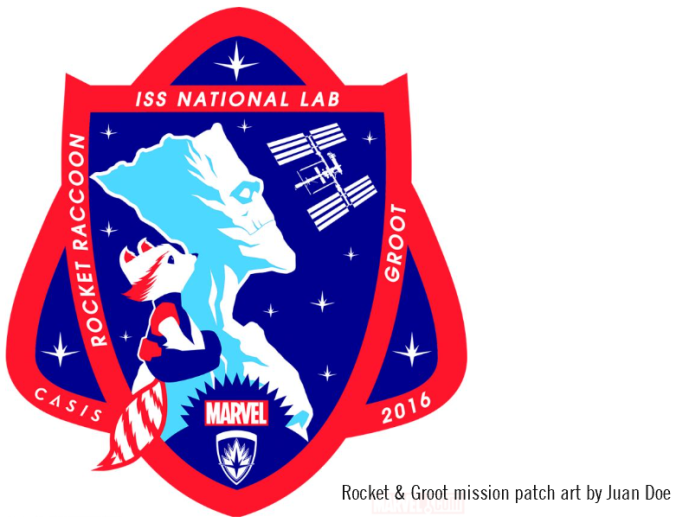
Reading and writing comics boosts literacy. Also, despite being static, the books help develop skills such as decoding facial and body expressions, as well as symbolic meanings (Simmons 2003). This can be especially good for both visual and kinaesthetic learners. Given all the above, it makes perfect sense to add arts and make the learning process more multidisciplinary. Art stimulates creativity and imagination, which are essential to solve problems. Super heroes with incredible super powers can do impossible things and to understand that, imagination is necessary. Science requires imagining solutions for problems and creating ways of obtaining those solutions.
It is not uncommon for manga or comics fans to also be interested in science and/or sci-fi, gaming and Star Wars and/or Star Trek (don’t be all upset if you love one and despise the other, I’m just giving a very general example!). In these, there are always characters with a crucial role that have STEM skills or gained their super powers through some science-related event. Many STEM careers are showcased, from medicine, to engineering, mechanics, physics or robotics. These have the power to influence and inspire STEM careers and hobbies. Sci-fi is great and most technological advances of the present started as fiction, as there wasn’t enough knowledge and technology at the time. It is likely that some of that and current fiction becomes a reality in a near future. Just take a look at some amazing tech projects at crowdfunding platforms such as Kickstarter or IndieGogo. Independent smart people (most with a STEM degree) are developing all sorts of incredible technology that otherwise might never come to exist or be known. Big film projects such as Star Wars, Star Trek, Avatar, X-Men, Iron Man, etc. are not only showcasing STEM in the story, but also pushing boundaries and using STEM to create the actual films. A huge and diverse team of CGI, writers, designers, STEM advisers, programmers, people who make faster cameras and with more resolution, etc. must come together so that something that amazing can be created.
I didn’t do an extensive search for this post, I’m sure there are more comics and similar resources out there. Libguides, developed by Melanie E. Hughes and Gary Pinkston from Indiana University Southeast is a great resource to find STEM comics. A few more examples can be found here and here.
I do not own any of the images and all have been referenced back to the owners/creators.



















